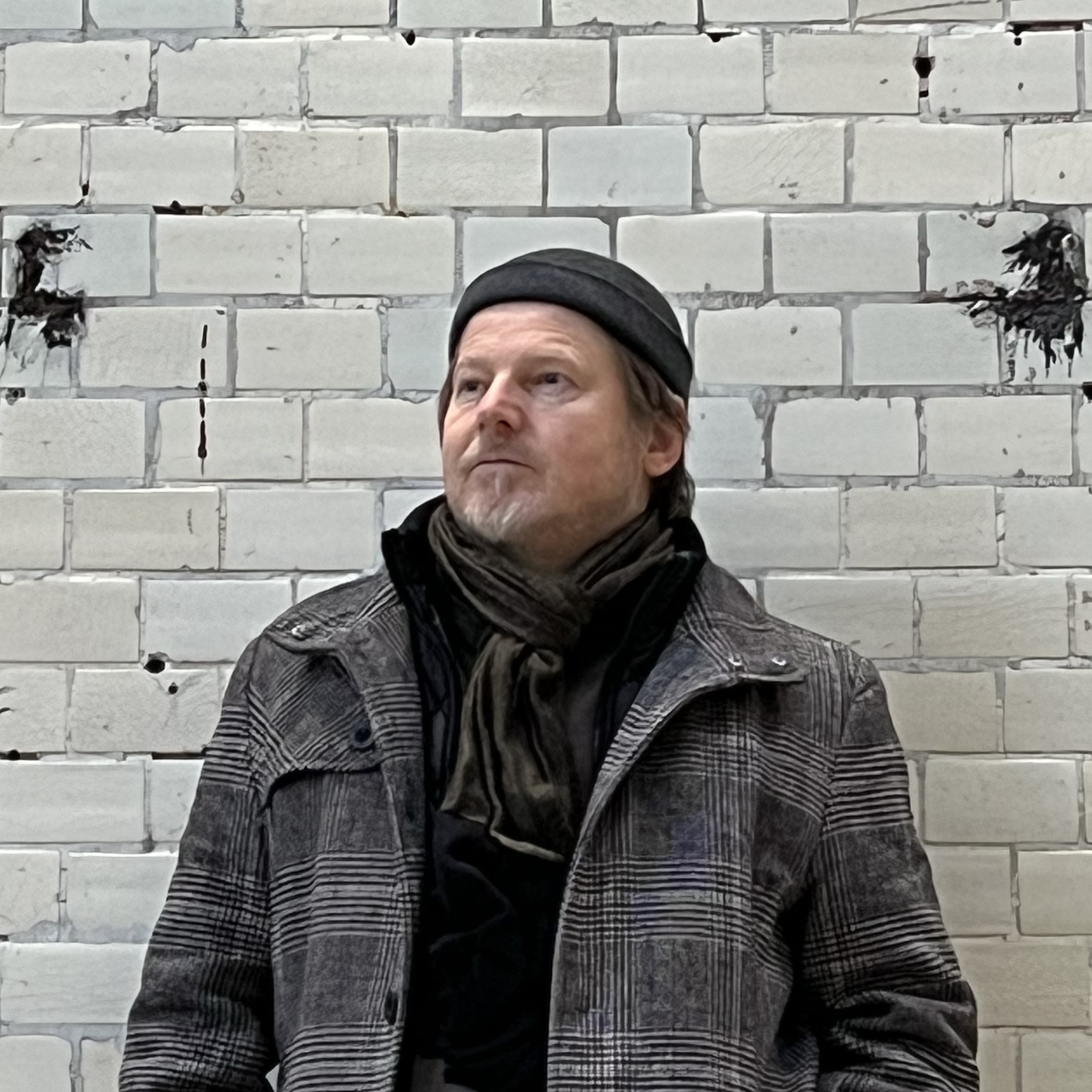

Conservation Through a Lens of Wonder
Acacia Johnson, BFA Photography 2014
Acacia Johnson is a photographer and writer from Alaska. Drawn to painterly light and otherworldly landscapes, her work has focused on the environment, conservation, and the connections between people and place—especially in the Arctic and Antarctica, where she has made over fifty expeditions.
Johnson’s photographs are regularly published in National Geographic and are held in collections at the Anchorage Museum and the Smithsonian Museum of American History. In 2021, she received the Canon Female Photojournalist Grant and in 2022 was awarded an ICP Infinity Award for Documentary Practices and Photojournalism.
︎ @acacia.johnson

Why is a Raven like a Writing Desk?
Douglass Scott, Senior Critic, Graphic Design
Douglass Scott has been a graphic designer and artist for over 55 years. For 35 of those years, he worked at WGBH Boston – a public television & radio producer and broadcaster. He has taught graphic design, typography, exhibit design, history of graphic design, and information design at RISD since 1980 and at Northeastern University since 2010. He taught at Yale from 1984 to 2023. He has given over 250 lectures on various aspects of design, and has curated hundreds of small exhibits on design since 1978.

A Love Letter to Creatives (On Where We Could Belong)
Joel Yong, Student, BFA Industrial Design 2025
Joel Yong is a designer with a practice of applying design methodologies to improve government systems and policies. Previously, he has worked on President Biden’s Executive Order for Advancing Racial Equity in federal government data, the development of the Colorado Privacy Act, and expanding Medicaid access in Rhode Island. Additionally, he was a fellow with Princeton University’s Center for Information Technology Policy, Coding It Forward, and the RISD Maharam. He leads the social impact student organization, Design for America (RISD/Brown).
︎ @joelyongg

The Case for Unethical Materials
Lizzie Brown, Student, BFA FAV 2024
Lizzie Brown is an interdisciplinary artist at the junction of animal science and design. Raised in the wilderness of North Carolina, they have looked after all manner of life from arachnids to waterfowl, incorporating that ever-expanding knowledge into their practical effects animatronics and wearable sculptures. When not working at RISD’s Nature Lab, they design and fabricate film-quality creature costumes for private clients.
︎ @m0ntydragon

The Repairer: A Radical Transformation in Design Education
Markus Berger, Professor, Interior Architecture
Markus Berger is an artist, designer, writer, and Professor of Interior architecture at the Rhode Island School of Design (RISD), a registered architect (SBA) in the Netherlands, and founder and director of The Repair Atelier: an art/design workshop that investigates and activates ideas of reuse. His work, research, writing, and teaching critique the ethics, aesthetics, and values of modern architecture and focus on forms of change and repair in art, architecture, and design. Berger co-founded Int|AR, the Journal on Interventions and Adaptive Reuse (2009- 2019) which addresses such issues as preservation, conservation, alteration and interventions. His latest co-edited books are: Intervention and Adaptive Reuse: A Decade of Responsible Practice, (Berger, Wong), Birkhauser, 2021; and Repair: Sustainable Design Futures, (Berger, Irvin), Routledge, 2023.
The Importance of Believing for Child Abuse Victims
Sylvia Rodriguez, Student TLAD 2024
Sylvia Rodriguez is an artist, educator, writer, social justice activist, and student teacher in the Teaching and Learning in Art and Design (TLAD) department at the Rhode Island School of Design (RISD). Her work in children’s media illustration centers children of diverse identities, in particular children with disabilities, races, and families. She believes in educational reform, equity, and accessibility for all, all of which inform her teaching practices, where she seeks to connect past and contemporary art histories to inform learners that art does not exist in a vacuum, and that all art is political.